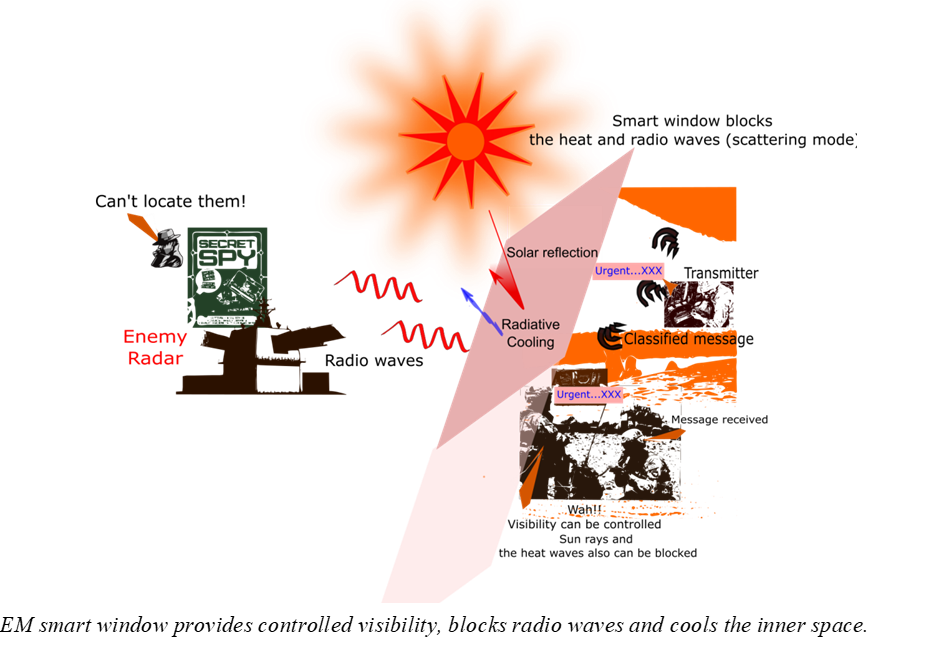Here I am recounting, of course in a more polished language, what I told a few train coach mates who were in fact PhD students of different institutes returning from a conference. It all started with each of us describing to others, the research work we presented at the conference. Sit back and read, as I recall it.
Fog, the familiar natural phenomenon on winter mornings, consists of tiny water droplets dispersed in the air at or near the Earth’s surface. The two materials involved, air and water, have one important difference: their refractive index. Their mismatch combined with the right size for the droplets leads to scattering of the light, thereby acting as a natural curtain.
Our mimicking [DOI: 10.1063/5.0020982] of this natural phenomenon has a material that is a unique combination of two substances: a liquid crystal (LC) and cellulose, an abundant naturally available polymer, which acts as a building block of all plant matter. A large portion of the agricultural waste arising from the processing of crops such as cereals, cotton, and groundnut shells are rich sources of cellulose. While naturally occurring cellulose consists of highly ordered and disordered regions at the molecular level, the cellulose extracted from discarded groundnut shells and purified yields highly ordered crystals in the nanometre dimension. These cellulose nanocrystals (CNCs), were mixed with a carefully selected LC to self-assemble a network resembling a spider’s web.
When light is incident on a device having such an assembly, the mismatch in the refractive index of LCs and the CNCsscattersit in a way that gives rise to a foggy appearance. At this point, we achieve something that Sun regularly does: clear the Fog. Application of a small voltage reorients the LC, leading to the matching of the refractive index and consequently high transparency or clearing of the fog. Switching between transparent and scattering states barely took a hundredth of a second. The contrast ratio between the scattering and transparency levels was maximized by properly tuning material and device properties. The curious heads around me got even more excited when I said that the usage of cellulose goes much beyond this simple fancy of smart windows.
One such application is an electro-magnetic (EM) wave shield. Swiss scientists employed a dried-frozen structure of CNCs with embedded silver nanorods to achieve a highly efficient EM shield [DOI: 10.1021/acsnano.9b07452]. The network morphology that we obtained appears even better suited to achieve a smart bio-based EM curtain with tunable shielding. Recently a group of researchers from the University of Maryland reported that engineered cellulose nanofibers show radiative cooling features, an energy-efficient method by which heat can be dissipated from buildings without energy-guzzling air conditioners. This cool wood is not just non-absorbing in the visible but has strong emission in the infrared (5 to 25 μm), cooling the surface by 4-9 oC below the ambient [DOI: 10.1126/science.aau9101].
As Steve Krug correctly said, “Usability is about people and how they understand and use the things, not about technology.”

Pragnya Satapathy
Senior Research Fellow
CeNS, Bengaluru

In the generation of smartphones, it time we gear up to install smart windows and glass panes that can be fitted into the workspace to create particular temperature and library glasses which can be controlled by finger touch.
Very interesting read indeed!
Nicely written Pragnya. Congratulations